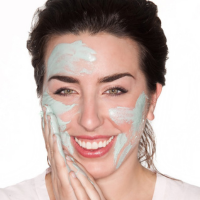The word “terpene” may not mean a lot to most skin care professionals, but shortly, you will realize just how influential and involved they already are in your aesthetics practice. Most already know a few and don’t realize what exactly they are.
Is a terpene a person? Nope. Is it a place? Negative. Terpenes are therapeutic compounds found in all plants that give them their smell, color, and therapeutic value. There are over 23,000 identifiable terpenes in nature. “Oh great! This must be a granola skin care article,” I can hear some of you saying to yourselves. Pump the brakes and listen darling!
Terpenes are a critical part of chemistry for all skin care practices independent of how you want to label them. fromy are a predominant part of organic and plant-based skin care, every chemist, biochemist, and cosmetic chemist in the world has a very keen and deep relationship, or at least understanding of, these compounds and skin care professionals work with them from the first day of their journey.
NATURE’S POWERHOUSE
Terpenes can be used in the formulation of skin care and body care products for a myriad of reasons, from their smell to their antiviral, antimicrobial, or antibacterial properties. One of the easiest terpenes to remember is limonene. The beautiful thing about limonene as a terpene is that the root of its name comes from the fruit it is most abundant in, lemons. Have you ever smelled hints of lemon in other plants, like rosemary, mint, or juniper? Different cultivars, meaning varieties (we mostly use “strains” as a word to identify bacteria in science) of cannabis can have lemony smells. That is from the traces of the terpene limonene. Limonene is used as an antioxidant and a permeation enhancer, meaning it can boost the absorption of ingredients. The aromatic side of terpenes is an easy way to digest and better understand the breadth and overlap of terpenes, which then opens the floodgates of all the other potentials of terpenes.
Another easy example of a terpene to remember is eucalyptol, which makes up to 80% of the terpene profile, which is measured with a chromatography test, in eucalyptus! It is also found in varying ratios in other plants like sweet basil, tea tree, rosemary, sage, and cardamom. Some other names for eucalyptus that you may have seen on ingredient lists include cajeputol, 1,8-p-methane, 1,8-oxido-p-methane, and 1,8-cineole.
Some terpenes are great antioxidants, meaning they scavenge free radicals and protect the integrity of skin from oxidation. They have phenomenal potential as anticonvulsants and antispasmodics, meaning they can reduce or prevent seizures and spasms. There are even countless terpenes that provide extraordinary anti-inflammatory properties to products. The point is that for every skin care problem skin professionals face, there is most likely not only one but a number of terpenes we are using to treat them.
Want to read more?
Subscribe to continue reading this article, plus gain access to all DERMASCOPE has to offer.
SUBSCRIBE

Antonia Schreiber is a New York state licensed massage therapist, cosmetologist specializing in aesthetics science, and electrologist. With over 16 years’ experience in the industry, Schreiber’s work has brought her everywhere from the classroom to her certified green spa, the Windham Spa, to the United States Olympic Training Center and beyond. Outside of the treatment room she is a writer, speaker, and consultant with the New York State Department of Education, leading education firms and industry magazines. Her current passion projects include treatment research and development for burn patients, and assisting in the development of the United States Paralymic Bobsled and Skeleton Team.